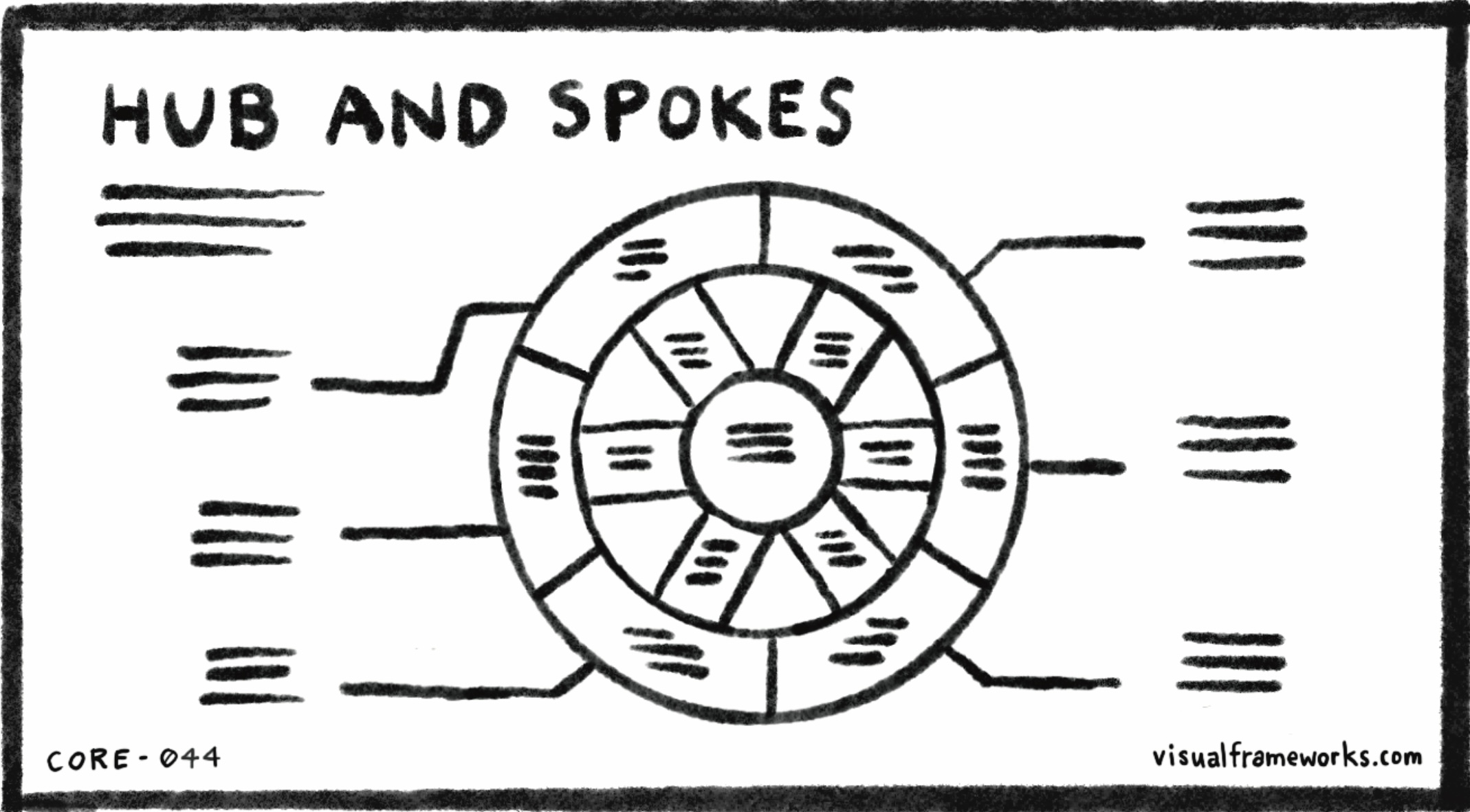The hub and spokes model can be used to describe any system that resembles a bicycle wheel, where paths (spokes) radiate outward from a central core (the hub).
Many airline networks, for example, are arranged in a hub-and-spokes manner, where passengers and planes are routed to their destinations via centralized hubs. Distribution networks often have a central “hub” model, where inventory is stored in a central distribution center before being distributed to multiple fulfillment centers.
The nervous system and circulation system in your body can be seen as hub-and-spoke networks. The brain and the heart serve as hubs, while the nerves and blood vessels serve as spokes, moving blood and nerve impulses throughout the body.
Usually, some things, like data, reporting, finances, maintenance, and coordination activities, work better when they are centralized, while other things, like sales and customer service, work better when they have the freedom and flexibility to make fast, local decisions.
A hub-and-spoke network tends to be more efficient, but reliance on a central hub can also make it less resilient. A hub can easily become a bottleneck or a single point of failure, that is, the entire network can be crippled because of problems at the hub.
Could a hub-and-spoke model be helpful in thinking about your situation? In what areas are centralization and standardization important? What areas need more flexibility? Can you improve your system, or design a better one?
See also: Org chart, Pipes and tanks, Flowchart, Causal loops, Cycle.
CORE-044
